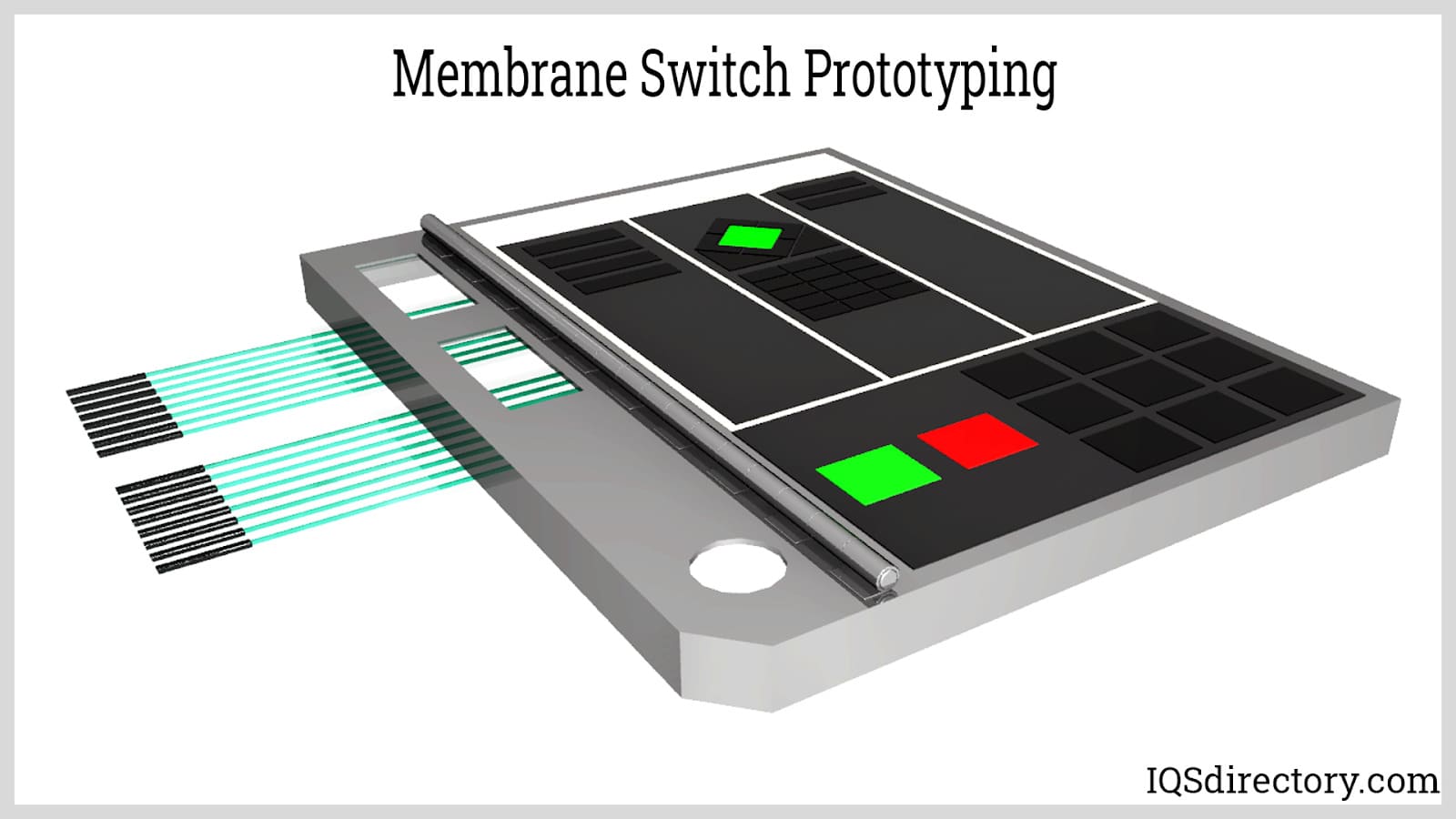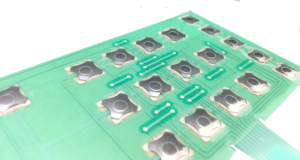Vital Features to Search For When Choosing a Membrane Switch
Vital Features to Search For When Choosing a Membrane Switch
Blog Article
Just How Membrane Layer Switches Over Add To the Resilience of Electronic Control Panels
Membrane layer switches play an important duty in boosting the sturdiness of electronic control panels, largely via their multi-layered construction which provides reliable protection versus ecological aspects such as dampness and dust. The lack of relocating components substantially minimizes the probability of mechanical failures, making membrane layer switches perfect for requiring applications.
Definition of Membrane Layer Buttons

Membrane layer buttons are designed to be thin and lightweight, making them suitable for applications where space is restricted. They can be made in various forms, sizes, and colors, offering adaptability in layout that meets visual and useful requirements. In addition, membrane buttons can integrate various innovations, such as tactile responses and LED signs, improving user experience.
Due to their construction, membrane layer switches are often immune to dust, moisture, and basic wear, adding to their sturdiness sought after atmospheres. Their seamless layout not only assists in easy cleansing however also lessens the danger of mechanical failing, making them a preferred option for manufacturers looking for trusted customer interfaces in their digital control panels.
Protection Versus Environmental Factors
The design of membrane layer switches naturally supplies a degree of protection versus different ecological variables, which is crucial for maintaining capability in challenging conditions - Membrane Switch. These switches are normally constructed with layers of versatile materials that shield interior elements from wetness, dust, and contaminants. By encapsulating the circuitry, membrane switches over lessen the risk of brief circuits and deterioration, which can considerably harm performance
Moreover, making use of durable adhesives and sealers throughout manufacturing improves their resistance to environmental obstacles. Membrane layer switches can endure direct exposure to chemicals and solvents, making them ideal for markets such as food handling and healthcare, where hygiene and tidiness are extremely important. Their smooth surface area layout additionally prevents the accumulation of dust and bacteria, assisting in much easier cleaning and maintenance.
Temperature changes are one more environmental concern, and membrane layer buttons are crafted to work effectively across a variety of temperatures (Membrane Switch). This flexibility makes sure that control panels remain functional in different setups, from industrial atmospheres to customer electronics
Effect On Individual Interaction
Customer communication with digital control find more panels is significantly affected by the style and performance of membrane switches. These switches provide a responsive user interface that boosts the general user experience, permitting for intuitive navigating and control. Their receptive nature ensures that users receive instant comments upon activation, which is critical for jobs needing accuracy and effectiveness.
In addition, the smooth surface area of membrane layer switches over facilitates easy cleaning and upkeep, advertising customer self-confidence in the integrity of the user interface. This sanitation is specifically essential in settings where health is extremely important, such as medical or food handling settings. Furthermore, the small and lightweight design of membrane switches over adds to the aesthetic appeal of control board, urging individual engagement through a modern and streamlined appearance.
Moreover, the combination of visual elements, such as published symbols and backlighting, assists users quickly recognize features, decreasing the finding out curve related to brand-new devices. Because of this, users can run gadgets much more effectively, bring about boosted efficiency and satisfaction. In summary, membrane layer switches play a pivotal role in enhancing individual interaction by integrating performance, visual appeals, and convenience of use, inevitably resulting in enhanced operational efficiency.
Design Adaptability and Personalization
Style flexibility and personalization are important elements of membrane buttons, making it possible for producers to tailor electronic control panels to details applications and user requirements. This flexibility enables the assimilation of numerous layout aspects, such as shades, graphics, and textures, which can improve the visual charm and individual engagement of the control board.
Membrane layer switches can be personalized in dimension and shape, fitting a vast array of tools and applications, from industrial equipment to customer electronics. This adaptability ensures that makers can develop intuitive user interfaces that line up with user assumptions and operational demands. In addition, the ability to include distinct attributes such as backlighting or tactile comments further boosts usability, permitting a more interactive experience.
Furthermore, the production procedure for membrane layer switches supports the rapid prototyping of designs, allowing manufacturers to iterate and fine-tune their ideas swiftly. This capacity not only accelerates the development timeline however likewise guarantees that the end product satisfies specific practical and aesthetic requirements.

Cost-Effectiveness and Longevity
Cost-effectiveness and durability are considerable benefits of membrane layer switches, making them an attractive alternative for suppliers and end-users alike. These buttons are commonly much less why not try here costly to create than traditional mechanical buttons, largely because of their simplified manufacturing procedures and the minimized variety of parts needed. This cost advantage expands not just to initial manufacturing yet likewise to lasting operational expenses, as membrane layer switches frequently call for less upkeep and have a reduced failing rate.
In addition, the long life of membrane switches over adds to their overall value. Created from durable materials, they are resistant to ecological elements such as wetness, dirt, and chemicals, which can lead to premature wear in other button types. The lack of moving parts lessens mechanical failing, allowing membrane layer changes to keep functionality over prolonged durations.
This longevity is especially useful in applications calling for constant efficiency under demanding conditions, such as clinical devices and find more industrial tools. Ultimately, the mix of cost-effectiveness and longevity makes membrane layer switches over an economically sensible choice for makers, providing reputable remedies that endure the examination of time while optimizing monetary factors to consider.
Final Thought
In final thought, membrane layer switches considerably enhance the sturdiness of electronic control panels through their robust building and construction and safety functions - Membrane Switch. Generally, membrane switches stand for a trusted and economical option for improving the longevity and capability of digital control systems.
Report this page